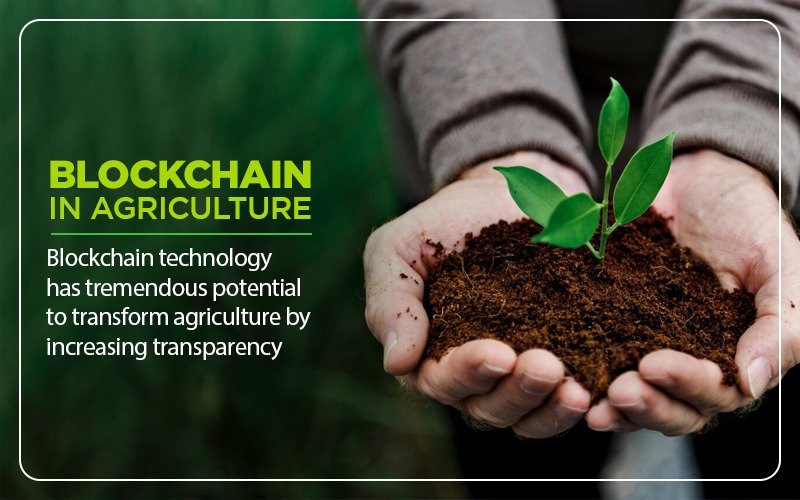
Blockchain in Agriculture
Posted on July 29, 2024
Blockchain technology has tremendous potential to transform agriculture by increasing transparency, traceability and efficiency across the supply chain. With blockchain’s ability to record complex transactions and assets, it ensures data integrity and reduces risk, thereby promoting food safety and sustainability but challenges such as access and addressing digital literacy for smallholder farmers to unlock the full benefits of blockchain in agriculture. This technology promises to empower both stakeholders and users, enabling confidence and informed decision-making in the global food market.
What is Blockchain Technology?
- Blockchain is a shared, immutable ledger that makes it easy to record transactions and assets tracked across business networks.
- Assets can be tangible (house, car, money, land) or intangible (intellectual property, patents, copyrights, brands).
- In fact, anything of value can be tracked and traded on the blockchain network, reducing risk and reducing costs for all involved.
- It distributes privileges to all network members instead of a single server and administrator.
- New database connections can then be accessed and validated by multiple users, increasing security and reducing the risk of corruption.
How Blockchain Technology Can Revolutionize Agriculture Sector?
Blockchain is a technology that can deliver success in agriculture through its potential. Blockchain agriculture increases food security by enabling data traceability across the entire agricultural supply chain. Blockchain’s ability to store and manage data allows for analytics, which can be used to help develop and implement smart agriculture and index-based crop insurance systems
Barriers to Using Blockchain Technologies
Concerns have been raised that blockchain technology could be abused or misused, putting food safety at risk. For example, privately held blockchains are easy to create and insecure. Because these blockchains are based on private organizational values, it’s easy to see how they could be used by the wrong people. On the other hand, smaller farmers, who lack the scale, technical expertise and scalability necessary to implement blockchain technology, may be left behind
Many issues need to be resolved before blockchain technology is fully integrated into agriculture.
The first is the decentralization of blockchain usage to recruit small farmers and rural communities. Otherwise, food safety remains a problem. Its implementation should enable sustainable and just food systems, enabling consumers to make informed decisions.
Those who lack the digital literacy required to participate in blockchain technology need to be educated. This is part of the decentralization process of the system. The world’s poor may not be able to participate because of obsolete infrastructure and digital literacy.
Pros of Blockchain in Agriculture
- Reporting : Blockchain technology can track all kinds of information about plants, such as seed quality and crop growth, and even provide a record of the plant’s movements once it left the field
- Supply chain transparency: Information can improve supply chain transparency and eliminate concerns about illegal and unfair practices.
- Recalls: Recalls can also make it easier to identify any contaminants or other sources of issues.
- Food Safety: The main objective of this technology is sustainability and food safety.
- Transparency: When consumers are so transparent, they can make informed buying decisions.
- Rewards: This can be used to reward farmers and producers who practice sound agricultural practices.
- The absence of any special power changes the trust nature of the transaction. Instead of relying on authorities, they build trust in peer-to-peer systems and encryption.
- Blockchain makes it easy to identify and report cases of failure or fraud: it is also easy to report any problems in real time using smart contracts.
Why blockchain technology can be the game-changer for boostering farming in India?
As food passes through many different players on its journey from the farm to the food plate, consumers today are increasingly demanding to know what they are eating and as supplies get longer, every consumer cares about the journey from the product more about origins.
Blockchain is the only way to bring traceability to agricultural products in a distributed market system.
Agricultural technology companies are introducing IoT devices and sensors, and blockchain technology can be used to integrate data across a range of topics, such as yield quality, crop tracking, and the route crops take from farm to market
In addition to increasing access to the food supply chain, blockchain technology can bolster security by prohibiting unfair crop production and distribution, endangering farmers’ livelihoods
Consumers will be able to make more informed decisions thanks to blockchain data collection, and may also be able to help smallholder farmers who often need food and financial security
Before data can be stored, it must first be organized and made understandable. Blockchain technology makes it easy to add meta information to data and policy. After that, it can be stored, making it easier to enforce. Data compliance ensures that the information collected is safe and secure.
Conclusion
In conclusion, blockchain generation holds big promise for revolutionizing the agriculture quarter, imparting transparency, traceability, and performance at some stage in the supply chain. Despite its ability advantages, challenges which include get right of entry to, virtual literacy, and concerns approximately misuse must be addressed to make certain equitable adoption, especially for smallholder farmers. By overcoming these obstacles and leveraging blockchain’s skills, we can foster sustainable and stable food systems, empowering stakeholders and purchasers alike to make informed decisions and drive effective exchange inside the international agricultural landscape.
